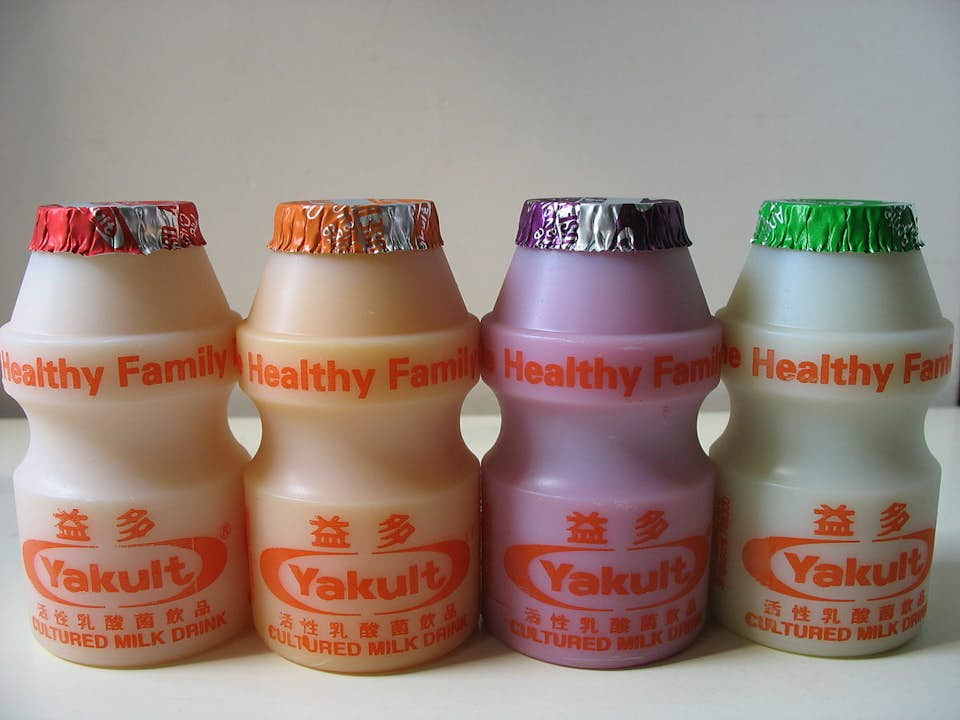Over-the-counter probiotics: "quite useless"?
The benefits of probiotics is a divisive topic. With the explosion human microbiome data in the past few decades, and growing evidence to support an essential role of commensal microbes in health, this field attracts the attention of both academic and industrial scientists. For every study demonstrating a clear benefit of microbiome modulation with probiotics, there is a study showing minimal effect or even adverse effects.
Late 2018 saw the publication of a study comparing a traditional over-the-counter probiotic formulation with a personalised extract from the individual's own healthy microbiome (autologous fecal transplant). The study measured their relative capabilities to recolonize a healthy microbiome in the gut after administration of antibiotics. Contrary to the premise for many commercially-available probiotic products and therapeutics, the researchers concluded that the generic, over-the-counter formulations are "quite useless" and may even be counter-productive for recolonization, whereas transplanting the patient's own healthy microbiome had beneficial effects for seeding healthy recolonization.
The outcomes of this study inspired widespread denouncement of consumer probiotics in the media. However, it is certainly not the first to call into question their efficacy. Since the emergence of probiotics on western markets in the 1990s, the evidence-base for a probiotics benefit to consumer health has been questioned frequently. In fact, the European Union banned marketing of food products with the term "probiotic", as it is considered to be a health claim (European Regulation (EC) No 1924/2006) and not a single probiotic claim application has been approved.
Yet, consumers have been relatively undeterred by this lack of consensus on efficacy. From 2013 - 2018, global net sales of the original probiotic yogurt drink, Yakult, rose from USD 2.9 Billion to USD 3.6 Billion. In addition, recent survey data shows that probiotics rank as one of the highest interest ingredients to try among U.S. consumers, with 38% expressing a willingness to try probiotic-containing skin care. It seems that weak support from the scientific community has not discouraged consumers and in fact, our increasingly health conscious populations are investing in the possibility of keeping their microbiomes in check.
The provenance of probiotics
Probiotics come from a long-history of scientific observation and real-world application. The concept of health-improving bacteria was first proposed by Elie Metchnikoff in the early 1900s. Metchnikoff observed improvements to the health of a Bulgarian peasant population when they took regular doses of lactic acid bacteria in fermented dairy products. He was followed independently by Professor Alfred Nissle in 1917, who discovered a strain of Escherichia coli that conferred immunity to the symptoms of Shigella infection. Nissle isolated the strain and used it to successfully treat soldiers who were suffering with the infection, making him the first to use a specific probiotic bacterial strain as a therapeutic agent for a particular indication. To this day, this treatment is available in Germany and Italy as Mutaflor, now indicated for ulcerative colitis. In 1928, the discovery of penicillin largely shifted the focus of microbiological medicine in the west to antibiotics. In the east, however, the 1930s saw the discovery of a unique strain of Lactobacillus casei, which was robust enough to survive the gut. This discovery was made by the Japanese microbiologist, Dr Minoru Shirota, who founded Yakult 5 years later. The probiotic yogurt drink was distributed widely in Eastern Asia, but did not emerge on western European markets for another 60 years.
It is clear that probiotics pre-date the consumer goods industry, and rather originates from observational and application-based science. While these examples would lack most of the controls and data collection consistent with the rigour of modern science, they do allow us to trace the discovery and application of "good bacteria" to long before these products appeared on supermarket shelves. Interestingly, these original reports of health-improving bacteria all centre around a the use of a single, isolated microbial strain, which confers health benefits to a wider population. This bears a closer resemblance to over-the-counter products we see on the market today, than autologous microbiome transplant.

Yakult is a probiotic yogurt drink created by Dr Minoru Shirota who discovered a probiotic strain of Lactobacillus casei robust enough to survive the gut.
Probiotics in skincare
The skin microbiome is generally accepted to play an important role in skin health by:
- Secreting antimicrobial compounds to protect against pathogenic invaders
- Interacting closely with the human immune system
- Mediating the pH and chemical environment through their metabolism
Imbalances in the chemistry of the skin is attributed as a key causal factor for many common skin diseases, such as eczema, acne and psoriasis. Probiotics have been hypothesized to potentially modulate the skin microbiome, providing a way to indirectly re-balance the chemistry of the skin. Unsurprisingly, they have become popular active ingredients in consumer products.
Probiotic skincare products can be topically applied as part of a moisturiser, mist or serum, or taken as an oral supplement. An emerging area of research is the so-called 'skin-gut axis', which links gastrointestinal disorders, such as Crohn's disease, with skin conditions, such as psoriasis. These products can contain live bacteria, bacterial lysates, prebiotic substances or a specific mix of strains. Live bacterial formulations claim to actively seed skin health by direct addition of microbes commonly associated with good skin, or microbes that modulate the skin chemistry to restore a healthy balance. Bacterial lysates contain ingredients such as hyaluronic acid, sphingomyelinase, lactic acid and others, which modulate the chemical environment to promote skin health. Prebiotics are generally non-digestible, plant-based carbohydrates that feed "good bacteria" enabling them to thrive.
Commercially-available probiotic skincare is indicated for a number of applications, from general skin health to reduction of symptoms for specific conditions, such as atopic dermatitis or psoriasis. Clinical evidence is somewhat lacking for the former, however the latter has attracted increasing attention from microbiome researchers, most recently inspiring new research to explore the efficacy of specific probiotic strains in atopic dermatitis (AD).
The importance of the metabolome for probiotic efficacy
In recent years, two studies have demonstrated that a single bacterial strain can be both probiotic and pathogenic, depending on its chemical environment. These studies underline the importance of the probiotic strain's provenance, rather than the strain itself, and challenge the notion of disparate categories of "good bacteria" and "bad bacteria".
S. aureus in atopic dermatitis patients
The first study was completed by Professor Richard Gallo's group in the Department of Dermatology at UCSD. The researchers compared the expression of antimicrobials produced by Staphylococcus aureus in the microbiomes of healthy volunteers and atopic dermatitis patients. The same strain of Staphylococcus bacteria was present in both healthy subjects and AD patients and showed much higher levels of antimicrobial activity in healthy patients. Furthermore, the researchers found that re-introduction of bacteria from healthy volunteers to AD patients decreased colonization by the AD-causing S. aureus. Overall, the study implies that the specific metabolic profile of the bacterial strain is more important than the presence of the strain itself and that a probiotic is only effective when the bacteria is actively expressing certain compounds.
R. mucosa in atopic dermatitis patients
The second study was completed at the National Institute of Allergy and Infectious Diseases (NIAID), and reports the first-in-human topical microbiome transplantation for improvement of AD symptoms. The Phase I/II safety and activity trial was initiated on the back of preclinical data showing that the commensal bacteria, Roseomonas mucosa, taken from healthy human subjects improved outcomes in AD mouse models, whereas the same strain taken from AD patients was found to worsen outcomes. The small BACTERiAD I/II trial was conducted in 5 AD sufferers, who were administered R. mucosa transplants from healthy human volunteers. The transplant was associated with significant decreases in measures of disease severity, topical steroid requirement and S. aureus burden. This study supports the notion that commensal bacteria have the potential to be both probiotic and pathogenic, and the specific state of the strain is key to it's efficacy as a therapeutic/skincare ingredient.
Conclusions
There is a scientific rationale for using probiotics to promote health in various parts of the body. It is well-accepted that the microbiome plays a critical role in human health and disease, from gut health to skin health to mental health. The evidence that ingesting or applying probiotics confer detectable benefits is more elusive and the results are largely contradictory. Recent advances suggest that the benefits of probiotics are strongly associated with the environment in which they are cultured. It is not a case of good or bad bacteria, but rather of whether the bacterial strain is in a probiotic or pathogenic state.

Dr Rachel Murkett
Project Director
Dr Rachel Murkett leads strategic intelligence projects at Biochromex. She holds a PhD in Chemistry from the University of Cambridge and has 6+ years of experience as a scientific consultant to consumer goods brands.
